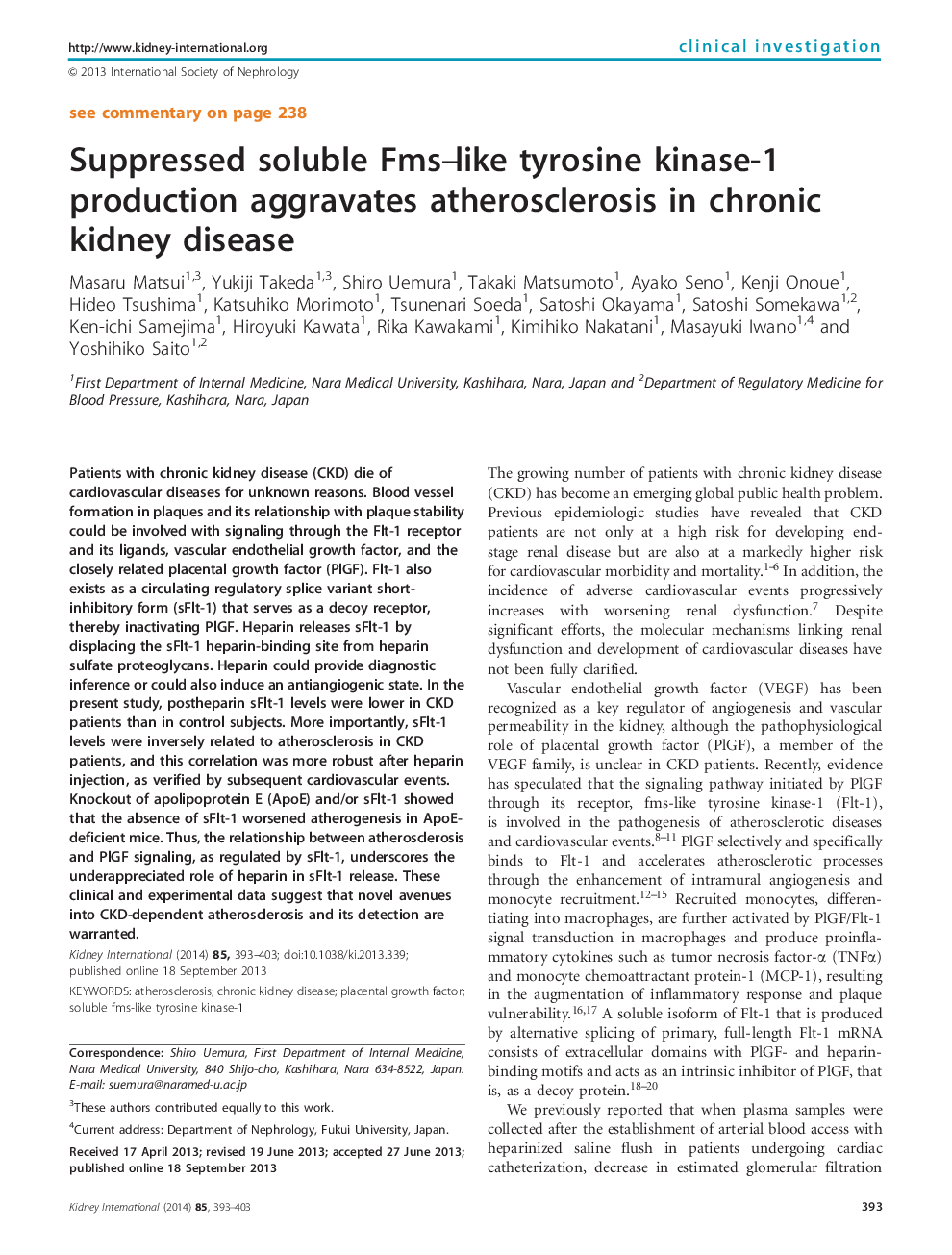| Article ID | Journal | Published Year | Pages | File Type |
|---|---|---|---|---|
| 6162402 | Kidney International | 2014 | 11 Pages |
Abstract
Patients with chronic kidney disease (CKD) die of cardiovascular diseases for unknown reasons. Blood vessel formation in plaques and its relationship with plaque stability could be involved with signaling through the Flt-1 receptor and its ligands, vascular endothelial growth factor, and the closely related placental growth factor (PlGF). Flt-1 also exists as a circulating regulatory splice variant short-inhibitory form (sFlt-1) that serves as a decoy receptor, thereby inactivating PlGF. Heparin releases sFlt-1 by displacing the sFlt-1 heparin-binding site from heparin sulfate proteoglycans. Heparin could provide diagnostic inference or could also induce an antiangiogenic state. In the present study, postheparin sFlt-1 levels were lower in CKD patients than in control subjects. More importantly, sFlt-1 levels were inversely related to atherosclerosis in CKD patients, and this correlation was more robust after heparin injection, as verified by subsequent cardiovascular events. Knockout of apolipoprotein E (ApoE) and/or sFlt-1 showed that the absence of sFlt-1 worsened atherogenesis in ApoE-deficient mice. Thus, the relationship between atherosclerosis and PlGF signaling, as regulated by sFlt-1, underscores the underappreciated role of heparin in sFlt-1 release. These clinical and experimental data suggest that novel avenues into CKD-dependent atherosclerosis and its detection are warranted.
Keywords
Related Topics
Health Sciences
Medicine and Dentistry
Nephrology
Authors
Masaru Matsui, Yukiji Takeda, Shiro Uemura, Takaki Matsumoto, Ayako Seno, Kenji Onoue, Hideo Tsushima, Katsuhiko Morimoto, Tsunenari Soeda, Satoshi Okayama, Satoshi Somekawa, Ken-ichi Samejima, Hiroyuki Kawata, Rika Kawakami, Kimihiko Nakatani,
